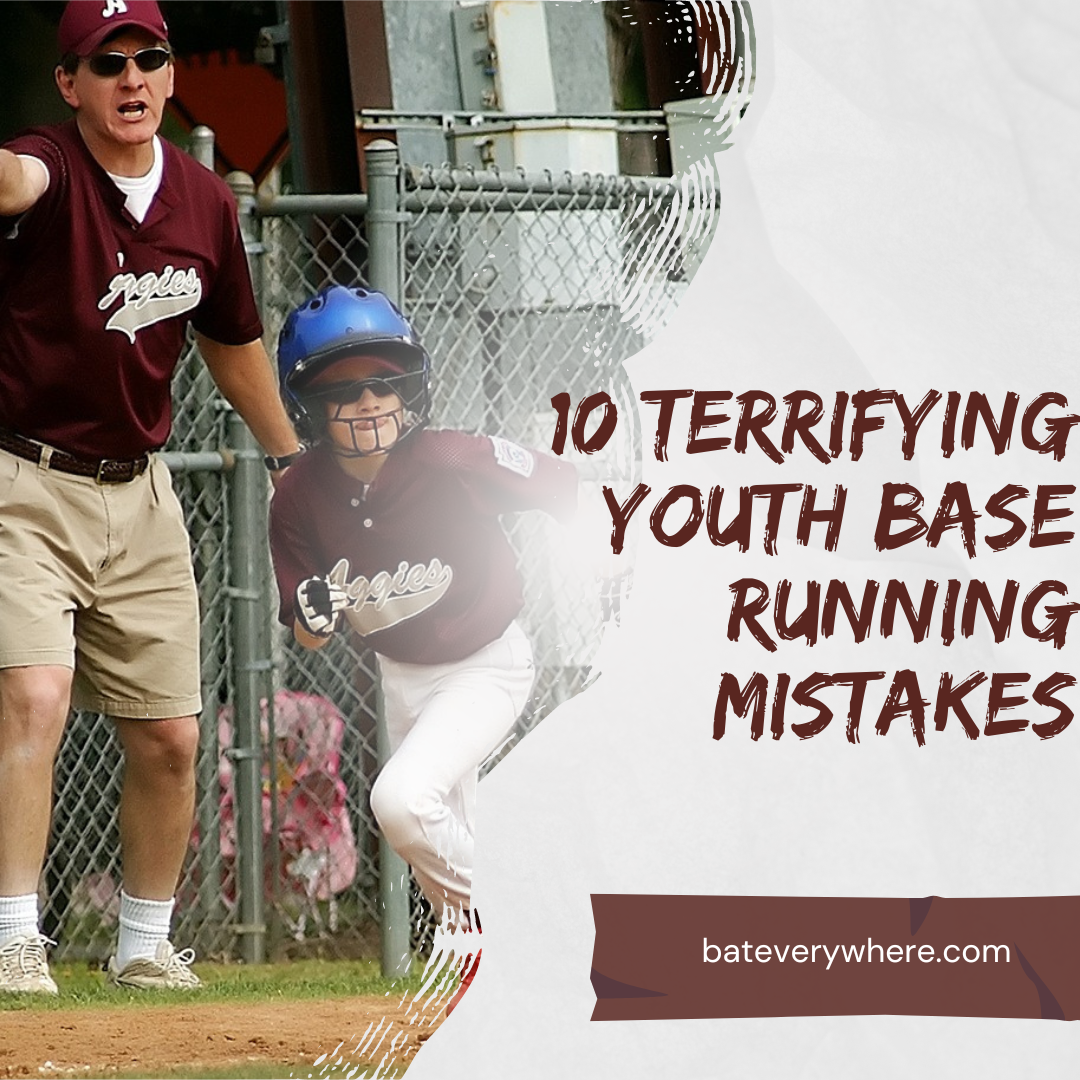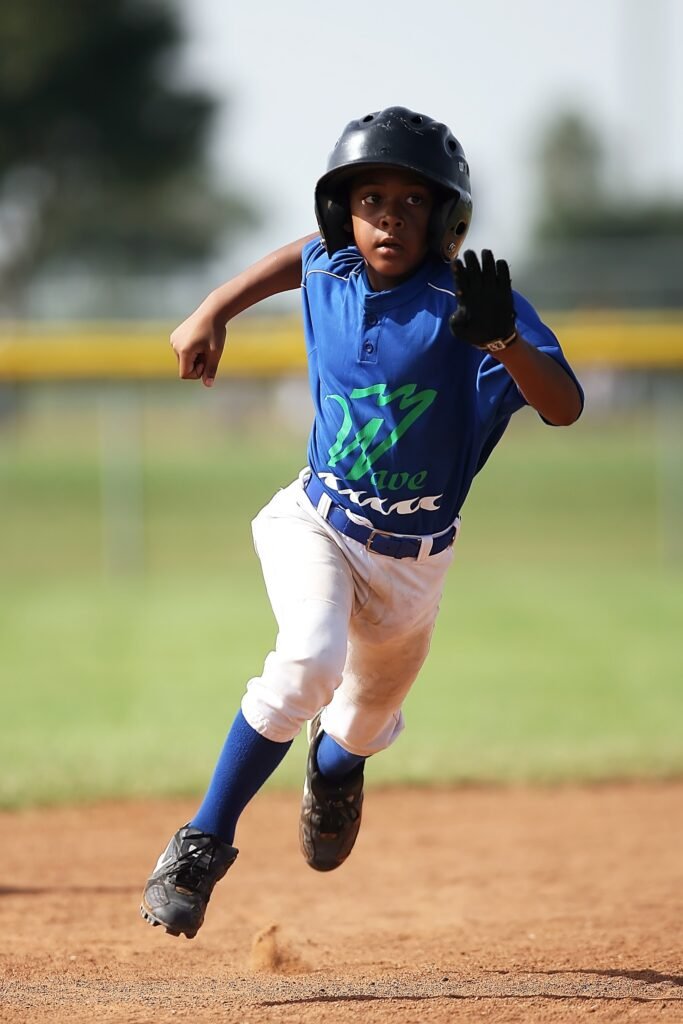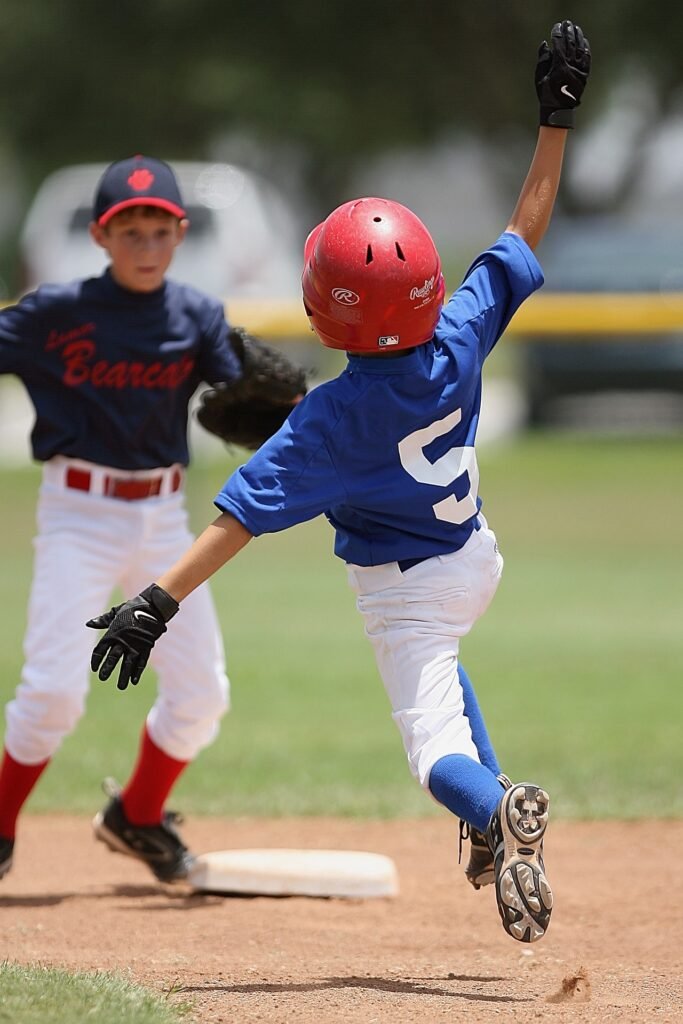10 Terrifying Youth Base Running Mistakes
- April 12, 2023
- 1
Youth base running mistakes can be game-changers, either propelling a team to victory or jeopardizing their chances of success. It’s an exhilarating aspect of baseball that demands speed,
Youth base running mistakes can be game-changers, either propelling a team to victory or jeopardizing their chances of success. It’s an exhilarating aspect of baseball that demands speed,

Youth base running mistakes can be game-changers, either propelling a team to victory or jeopardizing their chances of success. It’s an exhilarating aspect of baseball that demands speed, skill, and strategy. However, even the most talented young players can fall victim to common mistakes that can cost their team dearly.
In this article, we’ll uncover the top 10 terrifying Youth Base Running Mistakes that could be hindering your performance on the field. From misjudging distances to poor decision-making, we’ll delve into the research and provide expert insights on how to avoid these pitfalls and elevate your base running game to the next level.
So, lace up your cleats, grab your glove, and let’s explore these critical running mistakes that every aspiring baseball player should be aware of. Are you ready to step up your game? Let’s get started!
Base running is a crucial aspect of baseball and softball, and young players often make mistakes that can cost their team valuable runs. Youth base running mistakes refer to errors or poor decision-making made by young players while running the bases, which can have negative consequences for their team. These mistakes can occur due to a lack of experience, poor understanding of the game situation, or insufficient knowledge of proper base running techniques.

Let’s dive into the world of youth base running and uncover the common mistakes that young players often make.
Not paying attention to the coach or base coaches is a common youth base running mistake that can have detrimental consequences for a team. Coaches and base coaches play a crucial role in guiding players on the bases, providing signals and instructions to help them make informed decisions. young players can sometimes get caught up in the excitement of the game and fail to closely watch for these cues, leading to poor decision-making.
When players fail to pay attention to their coaches, they may miss important signals such as steal signs or stop signs, resulting in unnecessary outs or missed scoring opportunities. For example, a player may attempt to steal a base when the coach has given a “hold” signal, leading to getting caught stealing. On the other hand, a player may miss a “go” signal from the coach and fail to advance when they could have safely done so, missing out on a scoring opportunity for their team.
Not paying attention to base coaches can also result in confusion and miscommunication among players. Base coaches are responsible for providing guidance and direction to players as they approach a base or round the bases. When players fail to watch for these cues, they may make incorrect assumptions or misinterpret the situation, leading to mistakes such as taking the wrong route, missing base tags, or getting caught in rundowns.
To avoid this mistake, it is crucial for young players to be attentive and focused on their coaches and base coaches at all times during a game. They should be actively looking for signals and instructions, and be ready to react accordingly. Coaches should also emphasize the importance of paying attention to the coaching staff and following their instructions to make smarter decisions on the bases and maximize their team’s scoring opportunities. By being vigilant and attentive to their coaches, players can avoid unnecessary mistakes and contribute to their team’s success on the base paths.
Taking tight turns or cutting corners is a mistake that youth players often make. In an attempt to save time and reach the next base quickly, players may try to take shortcuts by rounding bases too tightly or cutting corners. this can result in slower base running and increase the risk of being tagged out by the defense.
When players take tight turns, they lose their momentum and may have to slow down significantly, making it easier for fielders to catch up and tag them out. Additionally, cutting corners too closely can cause players to miss touching the base properly, leading to being called out for missing base tags. This mistake can be especially costly in close games or in situations where the player is trying to score from one base to another.

Coaches should emphasize the importance of taking wide turns and using proper technique when rounding the bases. This includes hitting the inside part of the base with the inside foot and then pushing off with the outside foot to maintain speed and momentum. By taking wider turns and avoiding cutting corners, players can maintain their speed and increase their chances of safely advancing to the next base without risking unnecessary outs.
Aggression can be an asset in certain situations, it can also lead to costly mistakes on the bases if not managed properly. Players may become overly aggressive and attempt to take extra bases or steal bases without considering the game situation, resulting in unnecessary outs or missed scoring opportunities.
over-aggressiveness is attempting to steal bases without proper timing or awareness of the game situation. Players may try to steal a base when the odds are against them, such as when the pitcher has a quick pick-off move or the catcher has a strong arm. This can result in getting caught stealing and giving the opposing team an easy out.
Players should be encouraged to assess the game situation, consider the strength of the opposing team’s defense, and make calculated decisions on the bases. This includes understanding when it’s appropriate to attempt steals or take extra bases, and when it’s best to hold back and avoid unnecessary risks. By teaching players to balance their aggression with situational awareness, coaches can help them make smarter decisions on the bases and reduce costly mistakes that can negatively impact their team’s chances of success.
Sliding is a fundamental skill in baseball and softball that can help players avoid tags and reach bases safely. improper sliding techniques or avoiding sliding altogether can lead to unnecessary outs and injuries.
One mistake players often make is sliding too late or too early. Sliding too late can result in the player being tagged out before reaching the base, while sliding too early can cause the player to overshoot the base and be tagged out on the backside. Players should be taught to time their slides properly, making sure to initiate the slide early enough to avoid the tag but not too early to miss the base.
Some players may also avoid sliding altogether, especially if they are afraid of getting hurt. However, avoiding sliding can result in missed scoring opportunities and easy outs for the defense.
Missing base tags or failing to touch bases can result in outs and nullify potential runs. Youth players may sometimes become careless or lack focus when rounding bases or attempting to tag up, leading to missed base tags or failing to touch bases altogether.
Rounding first base after hitting a fair ball, players may fail to touch the inside or outside part of the base with their foot, resulting in an automatic out if the opposing team appeals the play. Similarly, when trying to score from third base on a fly ball, players may fail to touch home plate with their foot or miss it while sliding, resulting in an out if the defense makes a successful tag.

To avoid these mistakes, Players focus on their footwork and be aware of the position of the bases at all times during a game. Additionally, coaches can incorporate drills and practice scenarios that simulate base running situations to help players develop muscle memory and improve their base running skills.
It’s important for base runners to be aware of their surroundings and constantly assess the situation to make smart decisions on the bases. players may develop a habit of running with their head down, focusing solely on reaching the next base, which can result in missed opportunities or costly mistakes.
running from first to third on a base hit, a player may not notice the outfielder fielding the ball cleanly and preparing to make a strong throw to third base. By not looking up and anticipating the throw, the runner may be caught off-guard and tagged out, resulting in an unnecessary out.
Running with their head down can also result in collisions with fielders or other base runners. When players are not looking where they are going, they may run into fielders who are trying to field a batted ball or make a play on the bases. This can lead to injuries and costly outs, and disrupt the flow of the game.
Running from first to second base, a player may not anticipate the shortstop or second baseman receiving the throw from the pitcher and making a throw back to first base. By not recognizing the situation and reacting promptly, the runner may get caught in a rundown between first and second base, resulting in an out.
Base runners need to be aware of potential throw attempts by the defense and anticipate when to stay or advance to the next base. players may not effectively anticipate throws, leading to getting caught in rundowns and being tagged out.
Hustling refers to running at full speed and giving maximum effort on the bases, regardless of the situation. Players may not prioritize hustling during games, resulting in missed scoring opportunities or even getting thrown out on the bases.

Youth players may sometimes jog or not give their full effort when hitting ground balls, assuming that they will be safe at first base. However, this can lead to close plays at first base where the player is thrown out by the defense. It can also set a poor example for teammates and coaches, as lack of hustle can be perceived as lack of effort or commitment to the game.
Base runners need to make smart and calculated decisions when navigating the bases, considering factors such as the game situation, the position of the defense, and the speed of the ball. players may act impulsively or take unnecessary risks, resulting in mistakes that can be detrimental to their team
Another mistake is trying to stretch a single or double into an extra base without evaluating the situation. For example, a player may attempt to go for an extra base on a hit to the outfield without taking into account the outfielder’s arm strength or the position of the cutoff man. This impulsive decision can lead to unnecessary outs or getting caught in a rundown.
Understanding the rules of baseball, including tagging up on fly balls, avoiding interference, and knowing when a ball is live or dead, is essential for successful base running. Lack of knowledge or confusion about the rules can lead to mistakes and missed opportunities on the bases.
youth base running mistakes can significantly impact a baseball team’s performance. Youth players should be encouraged to pay attention to coaches and base coaches, be mindful of their movements on the bases, slide properly, touch bases, keep their head up, anticipate throws, hustle at all times, make informed decisions, and adhere to the rules of the game.
With proper coaching, practice, and focus on avoiding these base running mistakes, youth players can develop strong base running skills, make smart decisions on the bases, and contribute positively to their team’s overall performance. By minimizing base running errors, players can increase their chances of scoring runs, putting pressure on the defense, and ultimately achieving success on the baseball field.
1 Comment
[…] the surface definition, peering into the depths of the PO’s multifaceted nature. Discover the intricacies of fielding, the meticulous strategies employed by players, and the sheer athleticism required to execute a […]